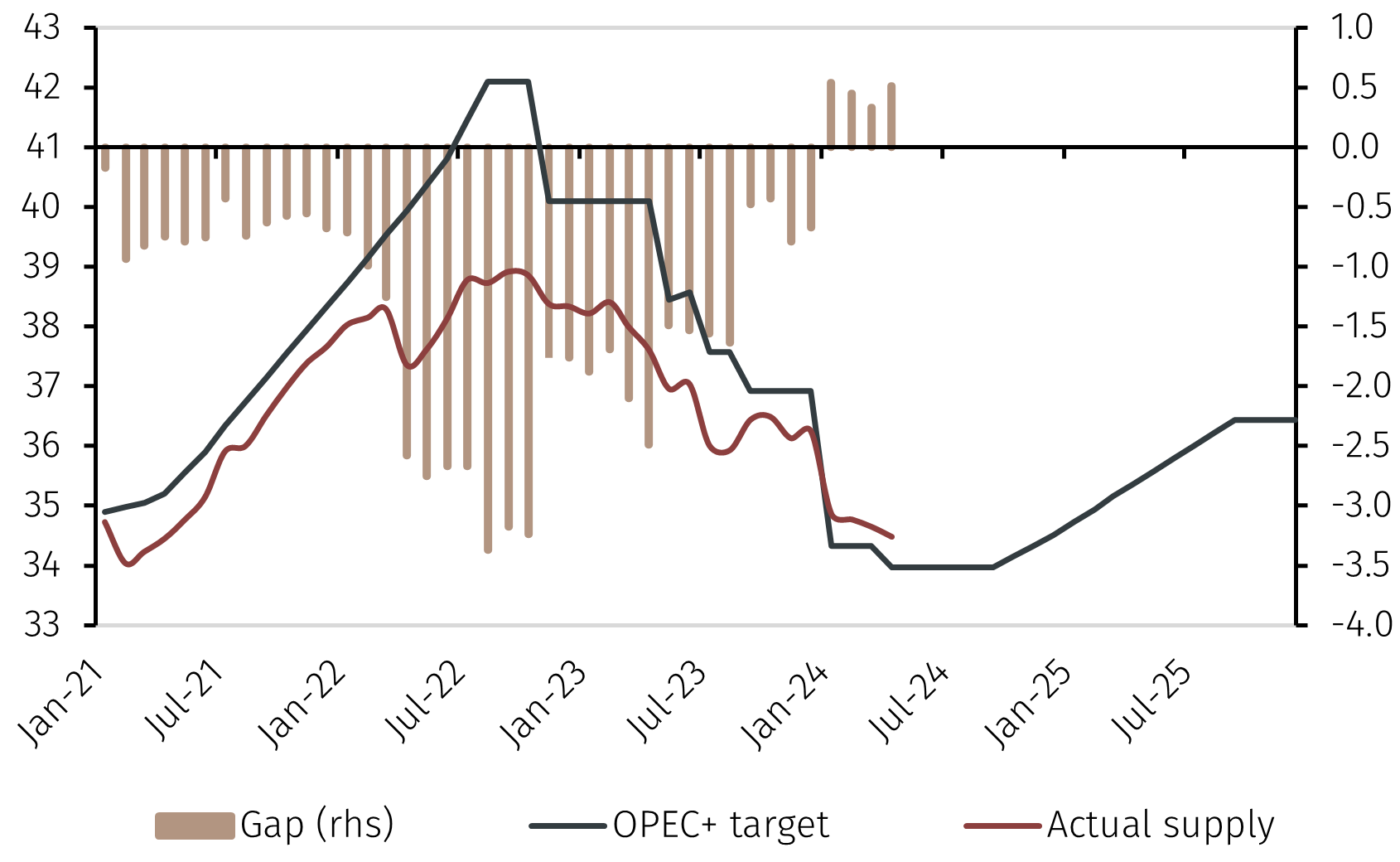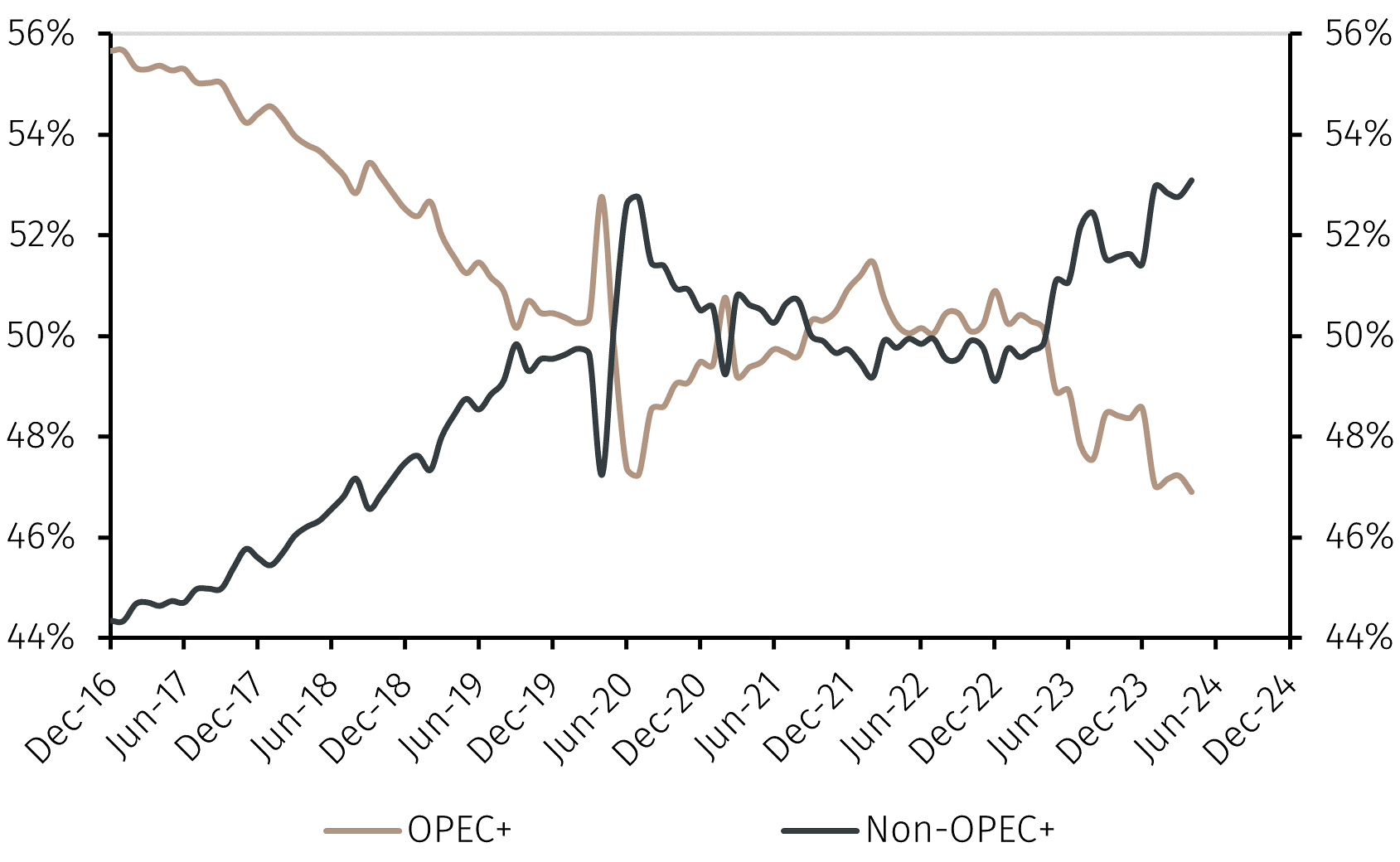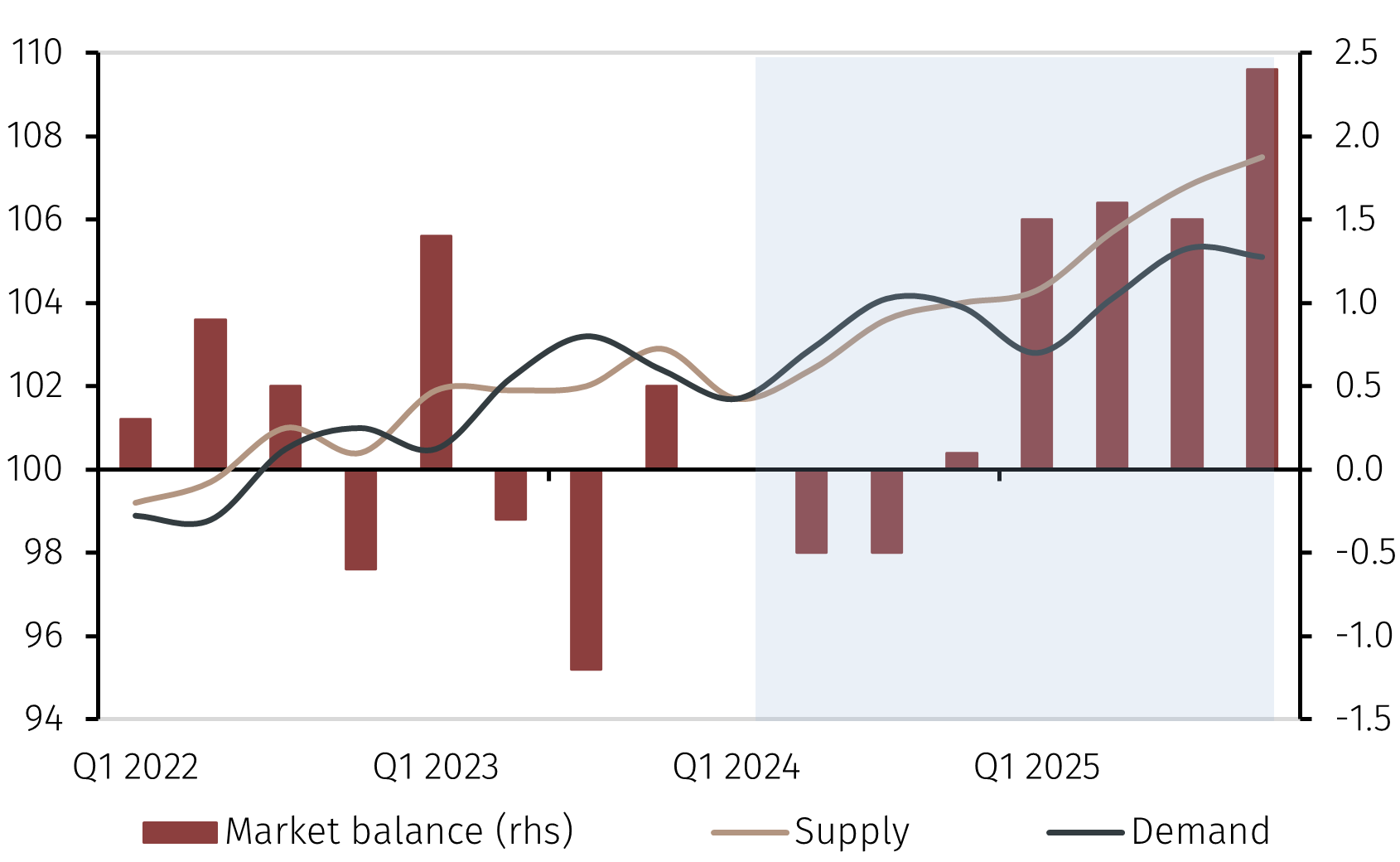The 2 June meeting of OPEC+ ended with the unexpected announcement that oil production quotas will rise starting from next October. Over the following 12 months, the production quotas of OPEC+ countries will rise by 2.5 million barrels per day (mbd) (see Chart 1).
Investment Insights • MFN
3 min read
OPEC+ stops price targeting strategy
In a surprise move, at its meeting on 2 June, OPEC+ announced an increase in oil supply starting next October. In this Macro Flash Note, Senior Economist GianLuigi Mandruzzato looks at the reasons behind this and the implications of the cartel’s decision.
Chart 1. OPEC+ target and production (mbd)

Source: International Energy Agency, OPEC, and EFGAM calculations. Data as at 07 June 2024.
Technically, this will return to the market the voluntary cuts worth 2.2 mbd implemented by some OPEC+ members starting from January 2024.1 In addition, the UAE's reference production level will rise by 0.3 mbd from January 2025.
However, OPEC+ will likely maintain oil supply cuts of 3.65 mbd that were implemented prior to January 2024.2 These include 2 mbd of cartel-wide cuts in place since November 2022 and 1.65 mbd of voluntary reductions in force since June 2023. They are meant to expire at the end of 2025 but will likely be extended into 2026, if only partially.3
The size and timing of the announced supply increase surprised investors. Crude oil and refined petroleum products prices fell about 5% after the announcement, extending the moderation seen since early April. OPEC+’s decision suggests a shift in the cartel’s strategy to prioritise maintaining market shares over supporting prices.
This likely reflects dissatisfaction among several OPEC+ members, including the UAE, Iraq and Kazakhstan, with production limits imposed by the de facto leaders, Saudi Arabia and Russia. Since December 2016, when the Declaration of Cooperation was signed between OPEC and several other oil-producing countries including Russia, OPEC+’s share of the global oil market has fallen by about nine percentage points (see Chart 2).
Chart 2. OPEC+ lost market share

Source: LSEG Data & Analytics and EFGAM calculations. Data as at 07 June 2024.
This was also the result of Qatar leaving OPEC in 2019 and Angola doing so in January 2024 due to disagreements with the cartel’s leadership. The main beneficiary of OPEC+’s price support policy has been the US, whose oil production has risen to over 13 mbd from less than 9 mbd at the end of 2016.
OPEC+’s new plan changes the oil market outlook. Taking account of the International Energy Agency’s projections for demand and non-OPEC+ supply to the end of 2025, there should be a large oil oversupply by early 2025 (see Chart 3).
Chart 3. Oil market trends (mbd)

Source: International Energy Agency, OPEC, and EFGAM calculations. Data as at 07 June 2024.
If this scenario materialises and in the absence of new shocks, downward pressure on the price of crude would be expected to intensify and it would be unsurprising if this happened ahead of the announced supply increases.
The resulting drop in inflation would increase the room for interest rate cuts by central banks, including in the US and Europe, while supporting growth in oil importing economies, like Europe. Furthermore, falling gasoline prices could increase Biden’s chances in the US presidential elections next November.
1 The countries involved are: Algeria, Kazakhstan, Kuwait, Iraq, Oman, Russia, Saudi Arabia, and UAE.
2 This is equivalent ot about 3.5% of global oil demand.
3 Iran, Libya and Venezuela are exempt from supply cuts and Mexico is excluded from OPEC+ compliance.
